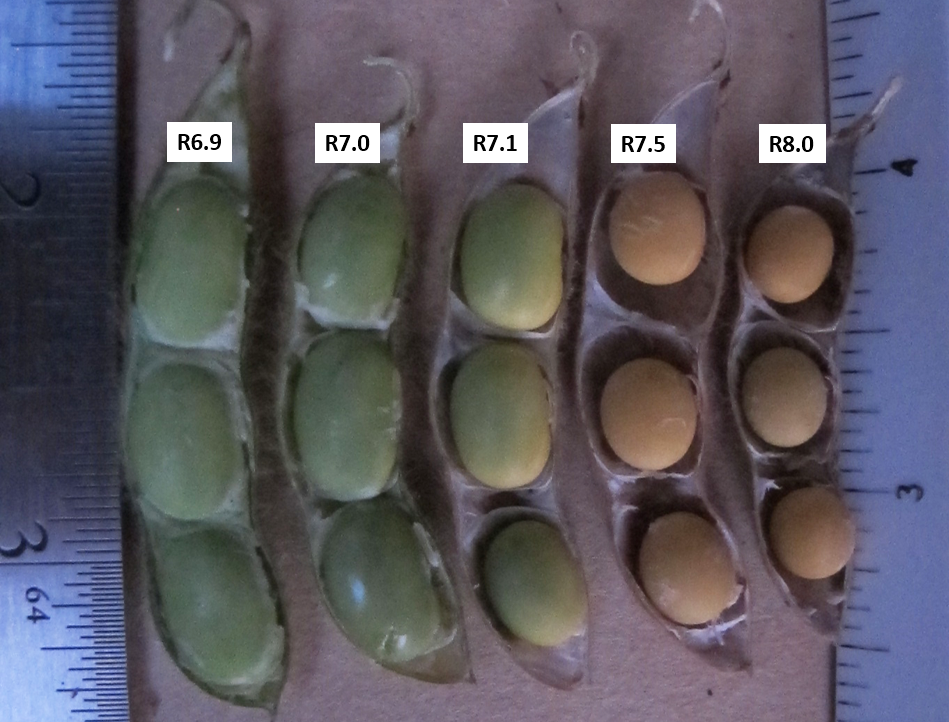| Upcoming Events: Aug. 27-Sept. 6: Nebraska State Fair Sept. 2: Ag Land Mgmt & Carbon Credits, 9-Noon, Extension Office, St. Paul, Reg. 308-754-5422 Sept. 2: Southeast NE Alfalfa and Wheat Expo, Reg. 8 a.m. Program 8:45 a.m.-3:30 p.m., Tuxedo Park Expo Bldg, Crete, RSVP: 402-821-2151 Sept. 7: Cover Crop Field Day, Reg. 9 a.m., Auburn area, RSVP: 402-274-4755 Sept. 8: Ag Land Mgmt & Carbon Credits, 10:30-1:30 p.m., Extension Office near Mead, 402-624-8030 |
Congratulations to all the 4-H youth who competed at the Nebraska State Fair this past weekend! The talent of our youth never ceases to amaze me. It’s also so encouraging to see life skills being developed such as public speaking, plant and insect identification, and the responsibility and care for animals.
Also so grateful to receive rain last night! And, that should finish up irrigation, or get it pretty close, for many that didn’t have late-planted crops. It’s really important to know your crop growth stage and to finish well. There’s some fields that are obviously over-irrigated with water standing after this last rain. On the flip side, it’s important to monitor soil moisture and crop growth stages to not stop too soon in spite of the long irrigation season and how tired farmers are. Several questions last week on ‘how’ to finish with irrigations and when physiological maturity occurs in soybeans.
Last irrigation: if you’ve been triggering irrigation during the growing season based on the recommended 35% depletion (average of 90 kpa on watermark sensors), you would have around 1.28” of moisture available in the top 4 feet for the plant in silt loam soils. A consideration for a step-wise approach I’ve used is this: Corn at ½ milk line needs around 13 days or 2.25” to finish the crop to maturity-so subtracting that from 1.28 would be 0.97”. As we consider allowing the soil moisture profile to deplete to 60% for recharge over the winter, a person could delay to 45-50% depletion (around 130 kpa average on watermarks) before triggering irrigation the first 7 days and then allow for 65% depletion (around 150 kpa average on watermarks) that last 7 days to finish irrigation for corn.

Soybeans range from full seed (R6 end of seed enlargement) which needs 18 days or 3.5” of water; R6.5 (leaves yellowing/pod membranes still clinging to seed) which needs 10 days or 1.9” yet; or physiological maturity in which the pod membrane has separated from the seed and no more water is needed. The NebGuide, “Predicting the Last Irrigation of the Season”, speaks to yellowing leaves as the beginning of physiological maturity. But the question I kept getting last week was “how yellow is considered yellowing leaves?”. Perhaps a better indicator for today’s varieties would be to also look at the pods. Until the pods reach R7, physiological maturity, the plant is still utilizing water. At R7, at least 50% of the field plants will have one mature pod anywhere on the main stem. A mature pod is considered when the pod membrane no longer clings tightly to seeds in that pod (this is like black layer on corn where the nutrient/water supply is cut off from the kernel forming the black layer). So essentially, if you pull off a pod on the main stem, carefully open it up and look at the membrane surrounding the seed. If it’s still clinging tightly to it, it’s not quite mature. If you see separation of the membrane and seed, it’s considered mature and will no longer use water. There can be a range of pod stages on a plant, but between yellowing leaves and pod color changes, one can get a pretty good idea when R7 has occurred and no additional water is needed for the plants. The timing of the ending R stages in soybean is determined by planting date and varietal maturity group, though the date of R7 can be hastened if water stress and high temperatures prevail in August — something we are seeing this year.
Soybean stems typically turn brown shortly after R7 begins, though the stem can remain green longer due to a number of reasons, including fungicide use. The final soybean stage is R8, which occurs when 95% of pods have attained maturity and have a variety-dependent color of brown or tan. Seed moisture in a soybean pod dries down from 70% at R7 to about 13% at R8. This has shown to be around 12 days based on research, but can be faster or slower depending on solar radiation, humidity, temperature, wind speed and soil surface moisture.
So, for scheduling last irrigation in beans: if we use the same example of having 1.28” of available water at 35% depletion in silt loam soils in top four feet, soybeans would need 2.22” with 18 days to finish at R6 or 0.62” with 10 days to finish at R6.5. Using the stepwise approach, one could again allow the soil moisture to dry down to 45-50% the first week and 65% the second week. This also allows room to catch rain like we finally experienced last night.
Fall armyworms have been on the increase in alfalfa and pastures recently, so please be scouting as they can decimate a field quickly in the late larval stages. The threshold is 3 or more per square foot and they’re easier to control if the larvae are ¾ inch long or less. When they’re larger than this, they’re more difficult to control and choosing to harvest the alfalfa may be a better control method. Insecticide options include products with active ingredients including the pyrethroids, Alpha-cypermethrin (Fastac CS), Beta-cyfluthrin (Baythroid XL), cyfluthrin (Tombstone), Gamma-cyhalothrin (Proaxis, Declare), Lambda-cyhalothrin (numerous products), permethrin and Zeta-cypermethrin (Mustang Max), organophosphates, chloropyrifos (numerous products), and carbamates, carbaryl (Sevin) and methomyl (Lannate).



































